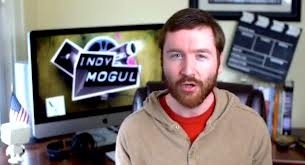Introduction
I’ve owned a video camera for over 11 years and in those early years it was relatively easy to set up my Canon DV camera, edit in Microsoft Movie Maker and output back to DV tape. In 2004 I invested in a DVD writer and burnt all my edited DV footage using Ulead. Then the explosion of High Definition cameras entered the market place which were all very expensive and I needed to upgrade both my ageing PC and my TV to reap the benefits of the increased quality. For the next 3 years I read about the quality improvements HDV gave against other alternatives and watched the prices come down. In 2007 I finally took the plunge and bought a Canon HV20 which has proven to be a fantastic camera but what format and frame rate to use?
DV or HDV – it’s a HDV camera so record in HDV.
1080 50i or 1080 25p – after some research my conclusion was 1080 50i as the advice suggested 1080 25p was better suited to film makers and suffered from juddering footage which the interlaced footage smoothed out.
For the next 4 years I simply used the camera and in 2011I bought Sony Vegas and a Blu-ray writer to create DVDs and Blu-rays from my HDV camera footage. During this time the memory based cameras has become the defacto standard for video cameras and its quality and price has surpassed HDV, thanks mainly to cheaper SD memory cards with larger capacity than a HDV tape (one hour footage on a 12Gig HDV tape). So HDV or Memory based?
Memory based only – I just couldn’t give up my Canon HDV and high end camera are still very expensive.
HDV only – I couldn’t ignore memory based cameras especially as the cameras were smaller and provide very long recording times.
HDV and memory based – this seemed right as I could have the best of both worlds.
How many memory based formats are there?
MPEG-2 – high quality format that has large file size that is easily transferred to DVD
MPEG-4/H.264 – high compression format that is designed for pocket cameras and high end video cameras
AVCHD – a variant of H.264 found on consumer camcorders
My camera set up
I have gone from having just one HD video camera early in 2011 to 5 cameras with HD video capabilities. My list of cameras are as follows:
Canon HV20 – my original HDV camera which I can not get rid of and I have supplemented with a 35mm adaptor which I have yet to use properly.
Sony FX1 – to supplement the HV20 to use as the main camera for recording my kids theatre productions, excellent low light and high quality HDV camera at a reasonable second hand price compared to memory based equivalent.
Sony CX130 – to replace the HV20 as my family handy cam which has a fantastic optical image stabiliser which removes the need for a tripod or rig.
Canon 550D – I upgraded my Canon DSLR and looked at the best option to include HD video.
GoPro Hero2 – I was intrigued by the 170 degree wide angle lens and the option to use a camera in extreme situations and water shots.
I used a four multi camera set up at the recent Stagecoach production, three HDV cameras (including a Sony HC1 camera which I have recently sold) plus the Sony CX130 AVCHD. All four cameras were set at 1080 50i which I created a HDV 1080 50i edit file before burning to DVD and Blu-ray. This seemed obvious as the majority of the cameras were HDV and interlaced and the AVCHD footage converted very well to the HDV format. My current camera set up has now tipped the balance from primarily HDV to memory based, so the killer questions is how to get the best out of the five cameras and how to best use them in a multi camera set up?
what frame rates to use? – 50i, 50p or 25p (all the cameras had different options and defaults).
what image size to use? – 1080 or 720 (all the cameras had different size to frame rate options and defaults).
what format to use as the master edit? – HDV or AVCHD or H.264 (I have assumed AVCHD provides the same capability as H.264)
what settings to use for distribution? – DVD, Blu-ray and YouTube/Vimeo.
Input/output settings
I analysed the best camera settings individually and assessed how they would work with each other and how the different output options that fit in with Sony Vegas and came up with the following settings (laying out my 5 cameras with the 4 output options on the floor visually shows the problem and the solution nicely – I used a Canon Ixus point and shoot to take this picture which I do not use for video).
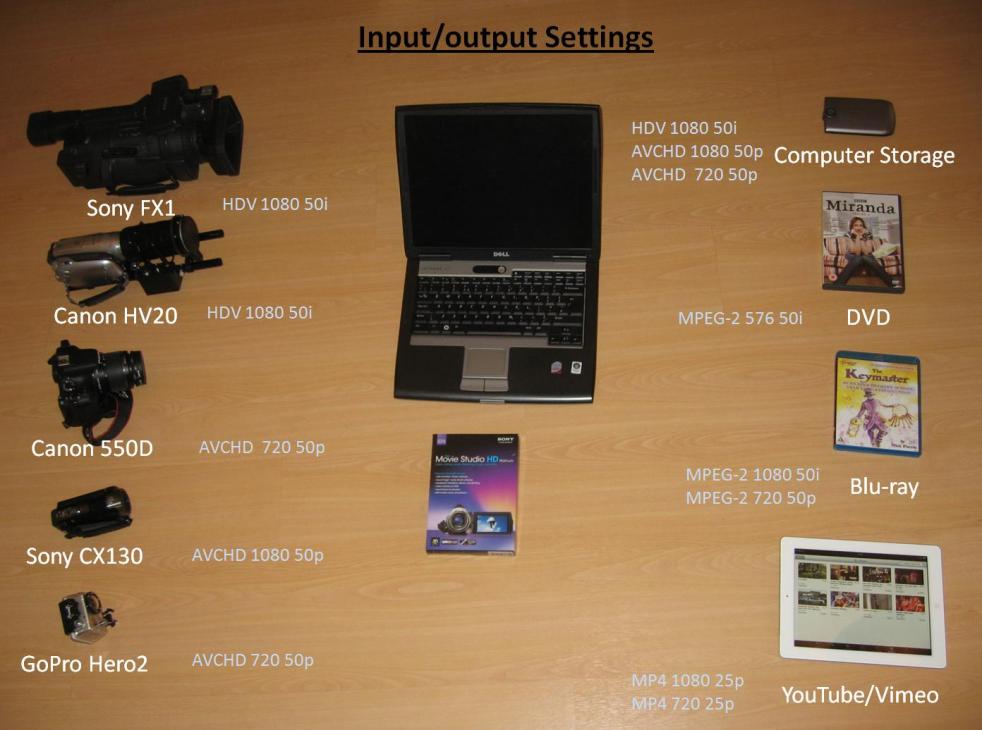
I decided on the optimal settings for my cameras for the following reasons:
Canon HV20 – I have been happy with 1080 50i for the past 5 years and I tend to use it with the Sony FX1 which does not have a progressive option, from my tests trying to convert interlaced to progressive I got a ghosting effect. I did some research and found that this was not as easy as it looks and requires some specialist software and a bit of fiddling to get the process right. I am not looking to make the process any more difficult and I prefer the smoothness of 1080 50i over 1080 25p.
Sony FX1 – There is no option to set the frame rate and it is defaulted to 1080 50i for the HDV format. Sony Vegas only has an interlaced frame rate option for 1080 Blu-rays and this convinced me to maintain interlaced as the output format if I record in 1080 image size and not to convert to progressive.
Sony CX130 – There is an option of 1080 50p or 1080 50i with the 50i having a number of different bit rate options. I had used 1080 50i at the highest bit rate previously but I felt the 1080 50p setting gave me more post editing options to mix with my other progressive footage and could be interlaced if required.
Canon 550D – There were 2 high definition options, 1080 25p and 720 50p. I initially set the camera to 1080 25p and found yet again that 25p was juddering and that the 50p footage was smoother. I also did some research and discovered that you should avoid mixing different frame rates (e.g. 25p with 50p), given this and that the CX130 only did 50p I decided on the 720 50p footage as this was the only option with 50 frames per second.
GoPro Hero2 – The same 2 high definitions options as the Canon 550D were available 1080 25p and 720 50p. Given the same reason for the Canon 550D I decided to use 720 50p although there is another option of 960 50p but this is not 16:9 wide screen.
I now have 3 combinations of using my 5 cameras mixed together to create an edited film:
(1) Any combination with HDV
HDV only – HDV with 1080 50i.
HDV and AVCHD – given the success I have had to date with HDV and the failure to convert HDV to progressive I decided to use HDV 1080 50i.bold>
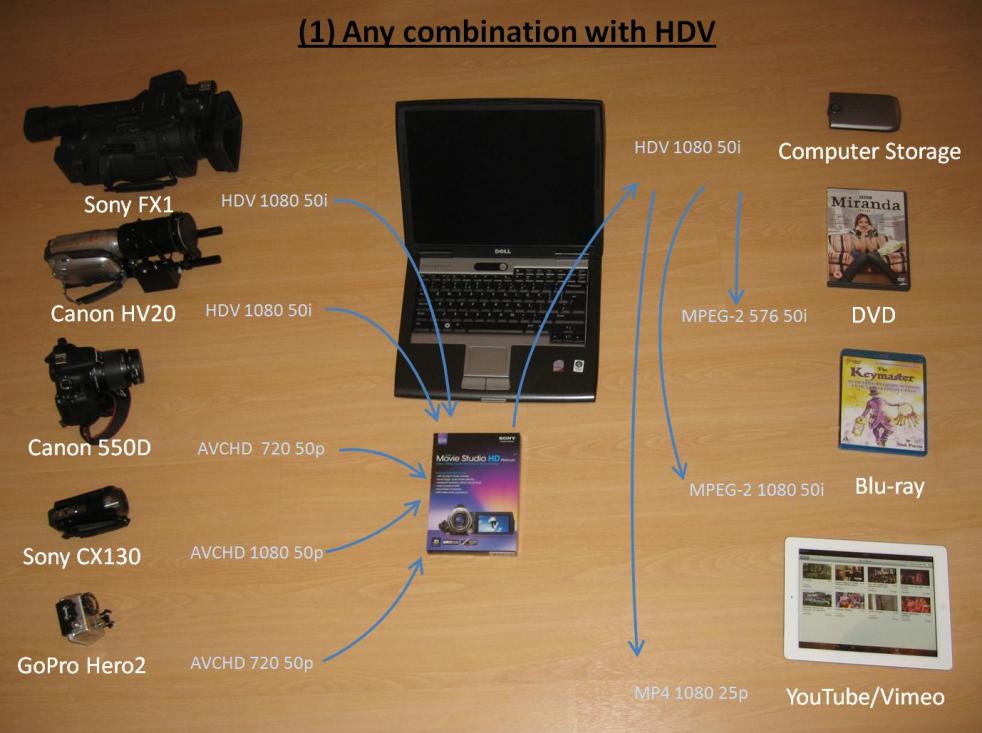
I decided on the the output settings for the following reasons:
DVD – MPEG-2 576 50i at the highest bit rate setting as this is the highest setting for DVD and matches the interlaced frame rate.
Blu-ray – MPEG-2 1080 50i at the highest bit rate as this is the highest setting for Blu-ray and matches the interlaced frame rate.
YouTube/Vimeo MP4 1080 25p as internet video sites do not want interlaced footage and this provides the highest quality that is similar to the edited frame rate.
(2) Sony CX130 on it’s own
My other combination was AVCHD only which I have 2 potential options 1080 50p and 720 50p. If I only used the Sony CX130 on it’s own I would use AVCHD 1080 50p.
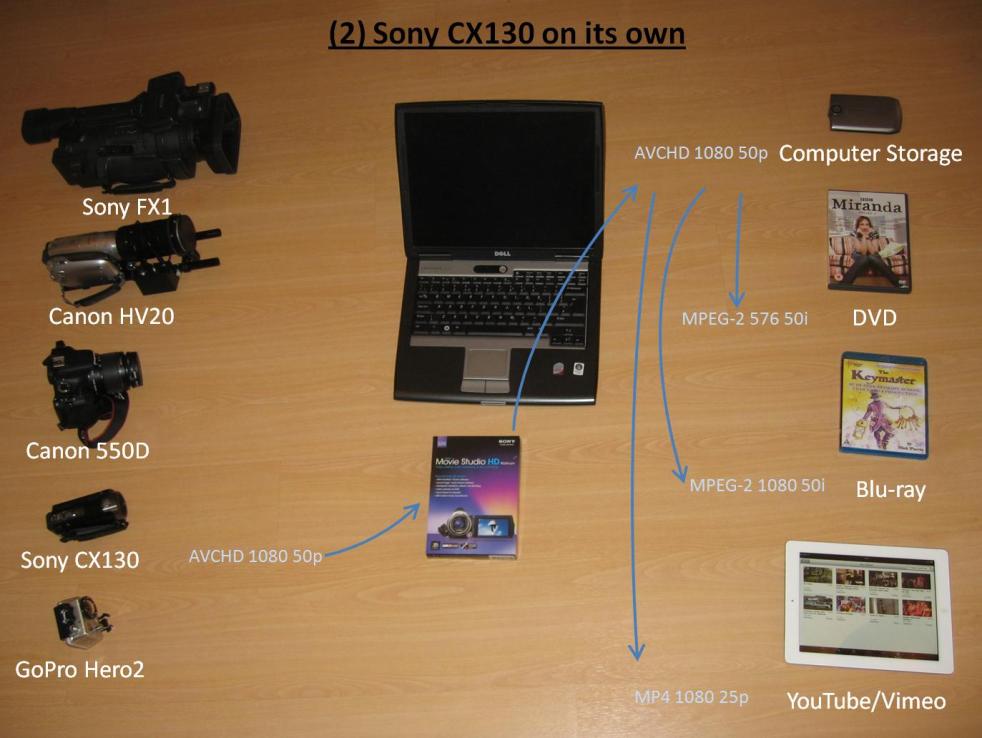
I decided on the the output settings for the same reasons as the HDV outputs.
(3) MP4/AVCHD combinations
The last camera combination is any combination of memory based camera excluding the Sony CX130 on it’s own. I decided to use AVCHD 720p as the two H.264 formats matched the frame size and AVCHD is based on H.264 so my assumption is that I will not lose any video quality.
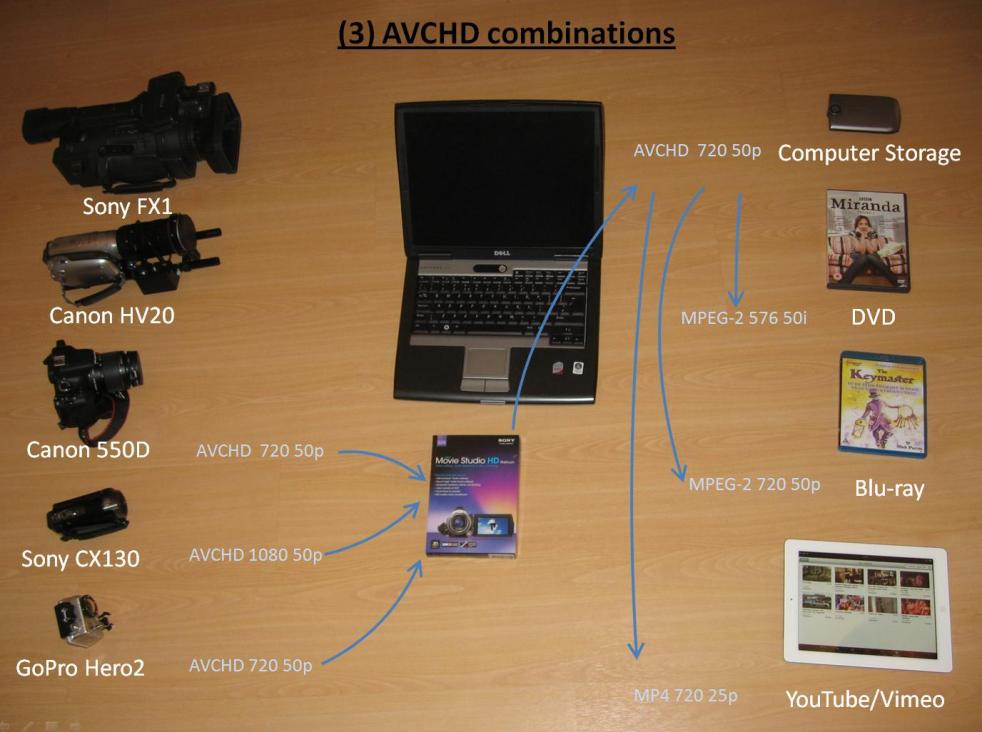
I decided on the the output settings for the following reasons:
DVD – MPEG-2 576 50i at the highest bit rate setting as this is the highest setting for DVD and the progressive footage would be converted to interlaced.
Blu-ray – MPEG-2 720 50p at the highest bit rate as this is the highest setting for Blu-ray that matches the progressive frame rate.
YouTube/Vimeo MP4 720 25p as internet video sites do not want progressive footage at 50p and this provides the highest quality that is half the original frame rate and matches the image size.
Conclusion
I really have 2 options:
HDV 1080 50i a high image quality really suited to HDV footage as the AVCHD footage has to be interlaced and sometimes expanded from 720 to 1080. This has proven to work for me and I have failed in my attempts to convert HDV to any other format and to progressive footage.
AVCHD 720 50p not designed for HDV footage or converting interlaced to progressive (but it can).
My main output is DVD and Blu-ray so I keep MGEG-2 as the transportation mechanism and only convert to MP4 for YouTube/Vimeo. I’m not sure why Sony Vegas does not support MP4 for blu-ray.
So the real question is when to pick up my HDV cameras instead of the memory based cameras and when to say HDV has had it’s day. If you’ve never owned a HDV camera stick to memory based camera, but if you are like me and own both use them both, love your HDV cameras and today is NOT the end of HDV cameras.
This has taken a lot of thinking based on my camera set ups and I wanted to document my thoughts and reasons to my decisions. I hope I have made the right decisions for the right reasons and it has helped any other film maker clear up the confusing array of formats, image size and frame rates. Oh yes I live in England where we use PAL standards and not NTSC and I have ignored the possibility of 24p, given my frustration with 25p.
Long live HDV cameras and memory based cameras too!
Glossary
HDV high-definition video on DV tape
AVCHD advanced video coding high definition on a file-based medium
H.264/MPEG-4 AVC one of the most common high definition compression methods (AVCHD uses H.264)
DV digital video
DVD digital versatile disc
Frame Rate frames per second
PAL phase alternating line
NSTC national television system committee
Interlaced interlaced video (i)
Progressive progressive video (p)
Blu-ray optical disc for high definition video
HD high-definition video
Sony Vegas video editing software for non-linear editing systems
MPEG-2 a video compression
MPEG-4/MP4 a multimedia container format

